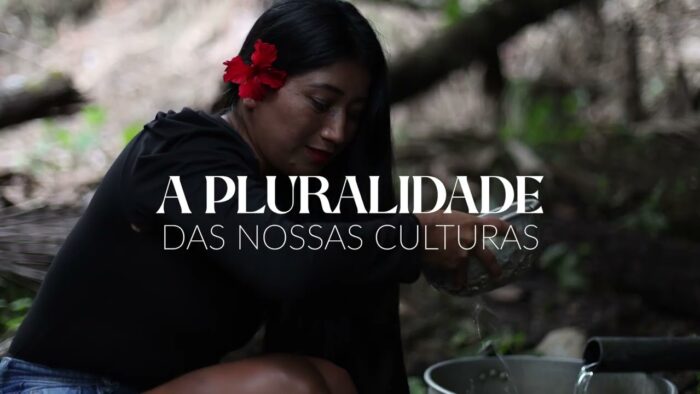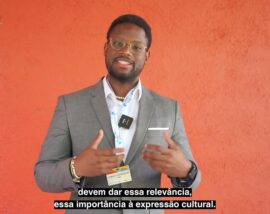Organization: UN Children’s Fund
Country: Brazil
Closing date: 15 Apr 2017
If you are a committed, creative professional and are passionate about making a lasting difference for children, the world’s leading children’s rights organization would like to hear from you.
For 70 years, UNICEF has been working on the ground in 190 countries and territories to promote children’s survival, protection and development. The world’s largest provider of vaccines for developing countries, UNICEF supports child health and nutrition, good water and sanitation, quality basic education for all boys and girls, and the protection of children from violence, exploitation, and AIDS. UNICEF is funded entirely by the voluntary contributions of individuals, businesses, foundations and governments.
Purpose of the Position
The Chief is responsible for managing and supervising all stages of education programs/projects from strategic planning and formulation to delivery of results on strengthening national education systems to improve learning outcomes, universal access to and equitable and inclusive primary/early childhood education and renewed involvement in secondary education, especially for children who are marginalized, disadvantaged and excluded in society. S/he leads a group of professional and support staff to develop and manage the education programme in country.
Key Accountabilities and Duties & Tasks
1. Managerial leadership
– Establish the Section’s annual work plan with the education team; set priorities/targets and performance measurement. Monitor work progress and ensure results are achieved according to schedule and performance standards.
– Establish clear individual performance objectives, goals and timelines; and provide timely guidance to enable the team to perform their duties responsibly and efficiently. Plan and ensure timely performance management and assessment of the Team.
– Supervise team members by providing them with clear objectives and goals and direction and guidance to enable them to perform their duties responsibly, effectively and efficiently.
2. Program development and planning
– Provide technical assistance and operational support to ensure that current comprehensive and evidence-based data are available to guide UNICEF’s strategic policy advocacy, intervention and development efforts on education programs and to set program priorities, strategies, design and implementation plans.
– Keep abreast of national/regional/international development priorities on education to leverage UNICEF position and competencies with donors, national governments, communities and constituents to advocate/promote education initiatives and policies.
– Supervise the development of education programs/projects (as a full component of the CO and/or UNDAF programs). Establish plans of action, program goals and results, using results-based planning methodology and terminology (RBM).
– Guide/coordinate the timely preparation of program recommendation and related documentation for inclusion in the Country Office Program recommendation ensuring alignment with the overall UNICEF’s Strategic Plans, regional strategies and national priorities, plans and competencies.
– Collaborate with national/global colleagues/partners/allies to develop partnerships framework to address specific needs and to leverage resources for enhancing education programs/projects. Ensure synergy, integration, coherence, and harmonization of programs/projects with UNICEF Strategic Plans and priorities, donors’ development strategies/policies, national priorities/competencies and UN System development interventions/initiatives.
3. Program management, monitoring and quality control of results
– Plan and/or collaborate with monitoring and evaluation initiatives to establish benchmarks, performance indicators and other UNICEF/UN system indicators, to assess/strengthen performance accountability, coherence and delivery of concrete and sustainable results on education programs.
– Participate in major monitoring and evaluation exercises, program reviews and annual reviews with government and other counterparts to assess progress and to engage stakeholders to take required action/interventions to achieve results.
– Prepare/assess monitoring and evaluation reports to identify gaps, strengths/weaknesses in program and management, identify lessons learned and use knowledge gained for development planning and timely intervention to achieve goals.
– Monitor programs/projects to assess progress, identify bottlenecks and potential problems and take timely decisions to resolve issues and/or refer to relevant officials for timely resolution.
– Plan, approve, monitor, certify and control the use of program resources (financial, human, administrative and other assets) certifying/verifying compliance with organizational rules, regulations and procedures, donor commitments and standards of accountability and integrity. Ensure timely reporting and liquidation of resources.
– Submit/prepare program/project reports to donors and other partners to keep them informed on program progress and critical issues.
4. Advisory services and technical support
– Provide technical advice to key government officials, NGO, UN system and other country office partners on strategies and best practices to influence approaches/policies and to support social/economic/political/legal development planning, implementation and delivery of results on education programs and related issues.
– Coordinate/ensure the availability of technical experts (with Regional Office/HQ) to ensure timely support throughout all stages of programming/project processes.
– Participate in strategic discussions to influence policy and agenda setting for combating all forms of discrimination against children by advising on and advocating strategies and approaches to promote universal access to and equitable and inclusive education for children in the country.
5. Advocacy, networking and partnership building
– Build and strengthen strategic partnerships through networking and advocacy with local/national governments, UN system agency partners, donors, internationally recognized institutions, NGOs, funding organizations, research institutes and private sector to reinforce cooperation and/or pursue opportunities, leverage funds, to promote goals and achieve sustainable and broad results on education programs.
– Prepare communication strategies and implementation plans and activities for maximum communication impact and outreach to promote awareness, establish partnership/alliances for sustainable results and support fund raising for UNICEF and Country Office programs on education.
– Participate and/or represent UNICEF in inter-agency (UNCT) discussions and planning on education and related issues to ensure organizational position, interests and priorities are fully considered and integrated in the UNDAF development planning and agenda setting process. Collaborate with inter-agency partners/colleagues the UNDAF planning and preparation of programs/projects including emergency preparedness.
6. Innovation, knowledge management and capacity building
– Promote critical thinking and innovative approaches and good practices for sustainable education programs/projects initiatives through advocacy and technical advisory services.
– Keep abreast, research, benchmark, introduce and implement best and cutting edge practices on education and management. Institutionalize and disseminate best practices and knowledge learned.
– Contribute to the development of policies and procedures and introduce innovation and best practices to ensure optimum efficiency and efficacy of sustainable programs and projects.
– Organize/plan/implement capacity building initiatives to enhance the competencies of clients/stakeholders to promote sustainable results on education and related programs/projects.
Qualifications of Successful Candidate
Education
– An advanced university degree (Master’s degree or equivalent) in education, economics, psychology, sociology or other social science field is required.
Experience
– A minimum of eight (8) years of professional progressive work experience in programme planning, management, and/or research in education, at the national and/or international level,is required.
– Previous work experience at supervisory/ managerial level is considered desirable.
-Pastwork experience ina developing country context is considered an asset.
– Previous relevant work experience in UN system and/or agency is considered desirable.
– Familiarity with emergency response is consideredan asset.
Language
– Fluency in Portuguese and English is required. Knowledge of an additional UN Language (Arabic, Chinese, Russian, Spanish) is considered an asset.
Competencies of Successful Candidate
Core Values
• Commitment
• Diversity and Inclusion
• Integrity
Core competencies
• Communication (II)
• Working with People (II)
• Drive for Results (II)
Functional competencies
• Leading and supervising (I)
• Formulating strategies and concepts (II)
• Analyzing (III)
• Relating and networking (II)
• Deciding and initiating action (II)
• Applying Technical Expertise (III)
To view our competency framework, please click here.
Please note that this Vacancy Announcement is open for competition to Brazilian nationals only.
In relation, please note that all candidates who wish to apply to this Vacancy Announcement are requested to prepare and submit their respected UNICEF applications in English language.
UNICEF is committed to diversity and inclusion within its workforce and encourages qualified female and male candidates from all religious and ethnic backgrounds, representing the diversity of Brazil, such as black and indigenous people, to apply to become a part of our organization. Candidates will be treated equally regardless of gender, sexual orientation, special needs, social and HIV/aids status. UNICEF is a smoke-free environment.
How to apply:
UNICEF is committed to diversity and inclusion within its workforce, and encourages qualified female and male candidates from all national, religious and ethnic backgrounds, including persons living with disabilities, to apply to become a part of our organization. To apply, click on the following link http://www.unicef.org/about/employ/?job=503839


